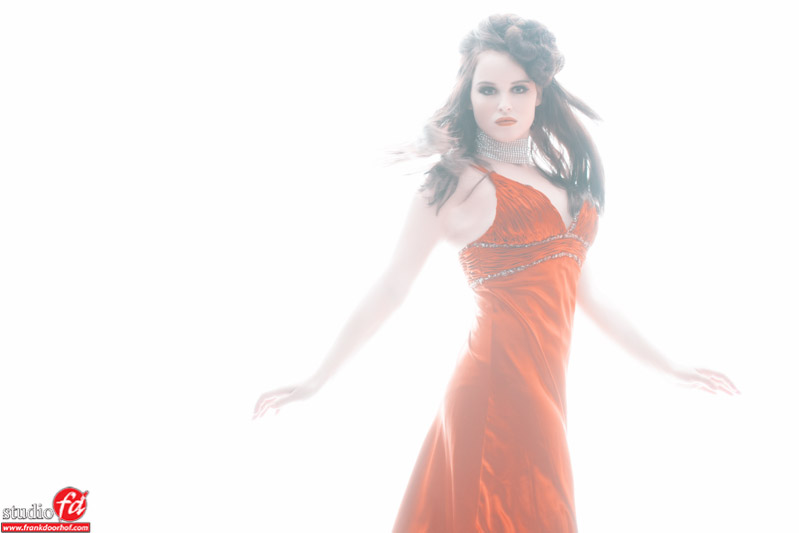Blowing out
We all know the white backgrounds, but to be honest I think they have had their longest time.
Now a days for example I just love the light grey backgrounds a lot more… we still use a white background for this but we just don’t light it, creating a very nice modern look. However if you still want to play with white why not try the following.
Normally we meter the model incident and add 2.5-3 stops to the background (metered reflective) to create a really nice white background without blowing out details like hair.
In the following shots I did something else, and I really like this technique. Instead of using a strobe as main light I just use the strobes on the white background and meter towards the camera (incident) to get a “correct” exposure on the face of the model. The main light source in this case is in fact the whole studio, or in other words all the light that scattered around the studio and reaches the model from the front. This will result in a very blown out background really wrapping around our model as you can see here :
 Now if the effect is a bit too strong you can always lower the exposure a bit on the the model or move the model further away from the background.
Now if the effect is a bit too strong you can always lower the exposure a bit on the the model or move the model further away from the background.
This technique also works very nice for portraits, but watch out with models with really light blond hair 🙂



